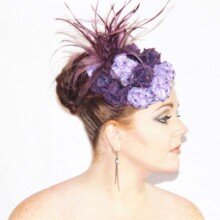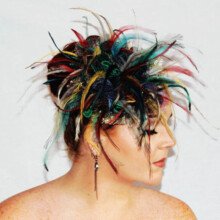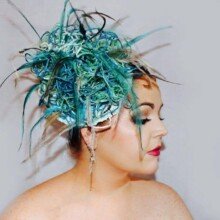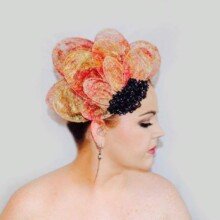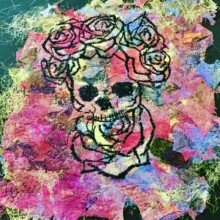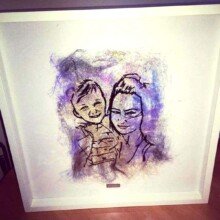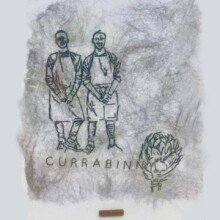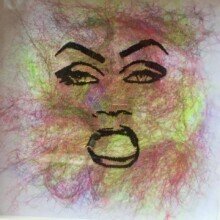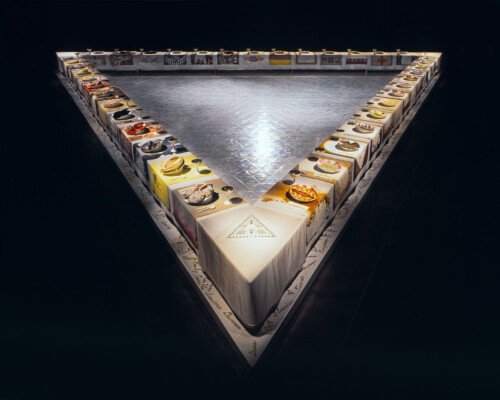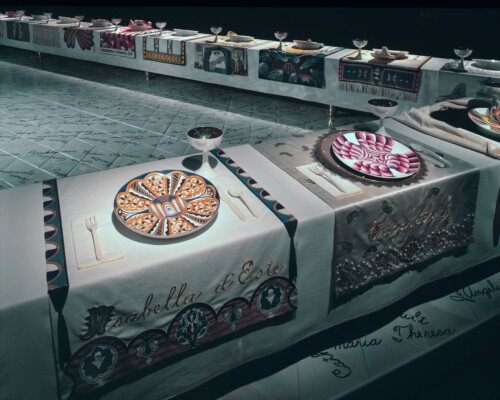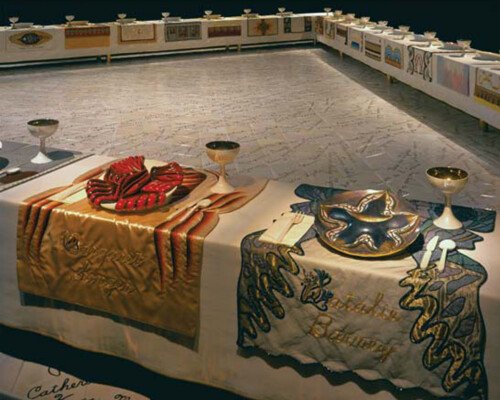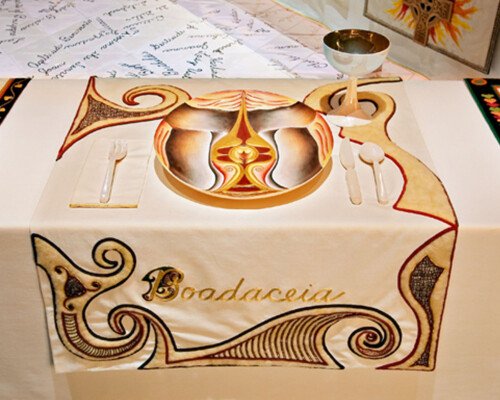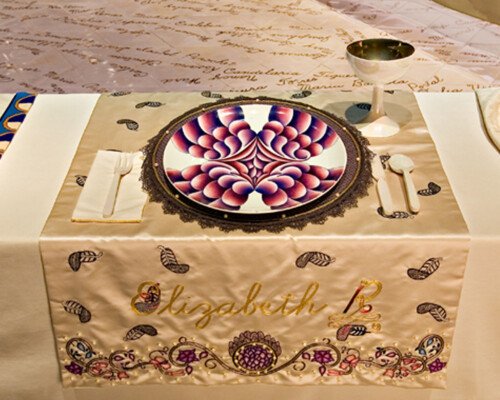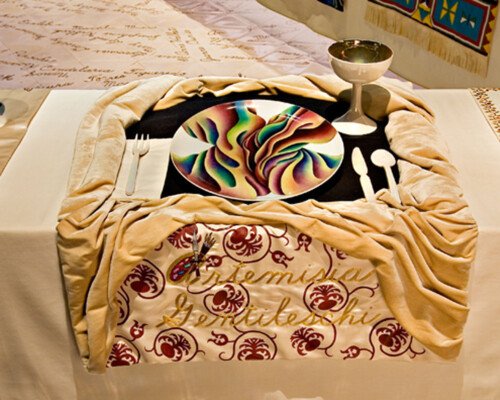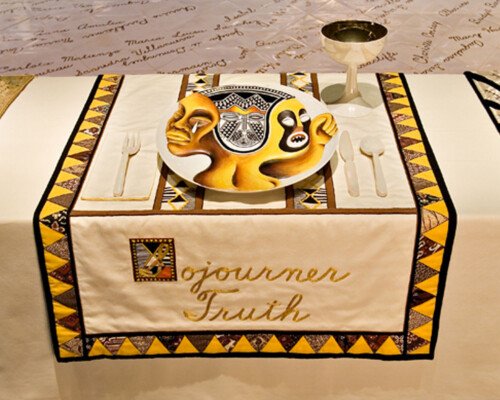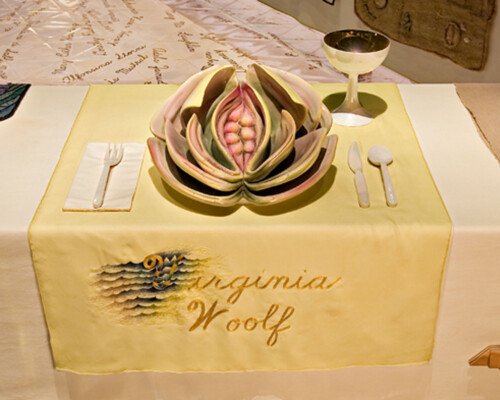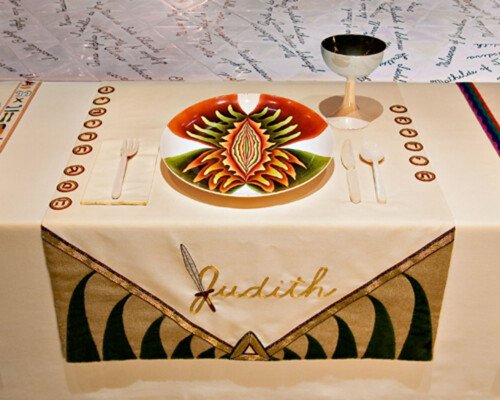
Design is a very vast word which umbrellas a very wide range of arts, crafts, textiles, fashion, etc. As forward as some may come across in the design world others are very much stuck in the past.
I myself am a designer. My designs begin with handmade fabrics I make and then sculpt into millinery designs. I also sew portraits and illustrations into my fabric’s. I am often referred to as a crafter or crafts person. It is not a word I personally tend to use not because I don’t like the word or have any negativity towards it, but I would tend to say I am a designer instead. In my experience I feel I receive more recognition if I say the word designer as opposed to crafter. I do believe I am both and do not understand why I have to choose my wording as carefully as I do.
The techniques I use in my designs are craft techniques. I will own these techniques, I will admit they are craft techniques, I will credit the word craft. However, it is the majority of the public which seem to hold the stigma of negativity toward the word craft. For example I have purposely said to a person when asked what I do for a living that I am a crafter and their response was ‘what like glue guns and sequins? followed by do you sit around knitting all day?‘. It seems to be a common train of thought among the public.
My Millinery Designs
My Sewn Illustrations
Craft has been stereo typically referred to as a domestic chore especially for women for centuries. It is a stigma which is still present in public opinion.
In the Middle Ages painting and sculpture did not receive the same recognition which they do today. Both skills were masculine ventures undertaken as a craft activity. Both were developed through apprenticeships which held no social status then. However to be a crafts person meant ability and manual labour was required. Today however painting and sculpture fall under the Fine Art category and from my own experience in Fine Art College you do not dare call either a craft.
The word craft cannot be defined under strict constraints as it has such a wide scope. Craft is defined in the English dictionary as ‘An activity involving skill in making things by hand.’ It is not merely constricted to knitting and sewing as some say, ceramics, jewellery, textiles, wood work, metal work, furniture, glass making, painting, sculpture, embroidery are all examples of skills which fall under the category of crafts but can also be defined as art, textiles, fashion etc.
Furniture making for example is a craft but is not necessarily perceived as a feminine activity which argues again the true purpose of the word craft. It does not have a sex, it is multipurpose word which both sexes can undertake whether a male wants to sew or a female wants to weld.
Designer Issey Miyake has a very creative use of textiles and has a very unique interpretation of fashion. He takes traditional craft methods such as weaving and dying and uses them in his pieces. His work is not perceived as a craft but instead as high end fashion.
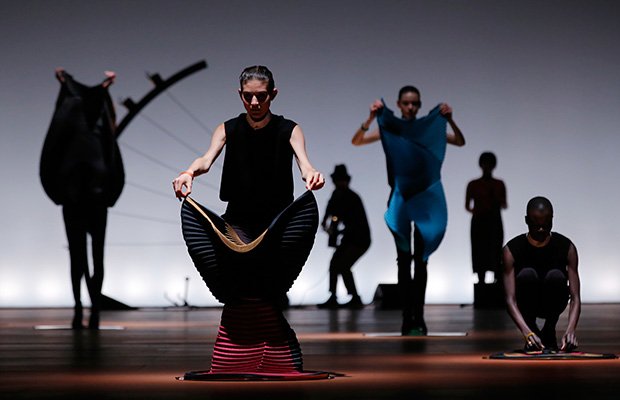
Issey Miyake – Paris Fashion Week Fall 2014
Chanel is another example. I often watch their videos on how a collection comes together. All the techniques they use from cutting and shaping fabrics, to hand sewing each piece together, these are all craft based methods. The skill set involved has been referred to as an art form and high end fashion. It also receives high praise for being innovative fashion but the word craft is rarely used when defining the brand. I can spend just as much time creating one of my own pieces and I am categorised as a crafts person and not necessarily a designer.
Here is an example of Chanel making of Spring- Summer 2017 Haute Couture Collection. I think the work is phenomenal and understand the painstaking hours that go into a piece. The public is strongly focused on the label that they don’t appreciate or understand the craft that goes into this from conception to the completed piece we see on the runway.
I have personally received negativity surrounding my work on various occasions. The first negative thing I am for the most part confronted with is how someone my age can produce the work I produce. It is the most ridiculous statement I have ever heard as what does age have to do with my designs. Next due to 99% of my work consisting of sewing, it can be fobbed off, first from the older generation because what would I know about sewing and second from the younger generation, as they don’t appreciate the work and craftsmanship that go into my designs.
Irish design Helen Steele is a hugely successful Irish Designer with her fabulous prints, worn all over the world by celebrities. I love how recently she came out and spoke the truth about what exactly it is like to be a designer is Ireland.
Helen Steele
- “It’s a big world out there and to really make a name for yourself…to be brutally honest, to live in this country and continue as a designer is nearly impossible. It’s so difficult, I’m a firm believer in you float your own boat. It is just disgracefully impossible – the funds being given to the Craft Council [of Ireland] are minimal and everything you get, you have to fight for.” – Helen Steele, The Irish Independent
This is a perfect example as the Crafts Council of Ireland are the ones who give out the funds, as minimal as they are. It is not called the Fashion Council of Ireland is it the CRAFT Council, which umbrellas all kinds of Irish Craft Creators.
I studied sculpture in college and wanted to incorporate fashion and textiles into my work which was always frowned upon by my lecturers. I was even referred to as a ‘fashion school reject’ at one point. I did continue with my line of design and was penalised for it. The negativity I received was due to the fact as I was studying Fine Art Sculpture and sewing was classed as a craft and there was no place for that in Fine Art College.
My confidence did take a bit of a knock but I kept at what I was doing and I developed a new kind of fabric which to this day I use in my designs which I call Saraden Fabric.
Saraden Fabric
There have been many artists who have used sewing techniques in their pieces. They are recognised artists and are hugely successful. Judy Chicago‘s – The Dinner Party is a huge artistic piece, it has been seen by millions all over the world and is a permanent exhibition in the Brooklyn Museum. Chicago used various craft techniques including embroidery and ceramics in The Dinner Party. For years the piece has been met with negativity due to its craft elements and repeatedly raised the question is it an art or a craft piece?
- In 1974 Judy began ‘The Dinner Party’. The use of ceramics, china painting, embroidery, and weaving were a means and an end. Because these media were disdainfully described as inferior women’s crafts by the male-dominated art world, one of Judy’s goals was to tumble this artificial hierarchy by integrating her artistic aesthetic and sill with those crafts, rendering them unequivocal equals of ‘fine art’. – ‘The Dinner Party is recognised as an iconic work of fine art. It is also monument to women, by women, using women’s crafts.’ – Elizabeth A. Sackler
Before the design world can really move forward and consider future trends the world needs to embrace the old trends and give them the recognition they deserve. After all if crafts didn’t exist years ago and artists and designers didn’t fight for their work to be recognised there would be no future to consider.
This blog post is a part of Design Blogger Competition organized by CGTrader. Link here.
